Should you freelance or take a job in a studio?
It's hot debate and can be one of the most important questions of your career, but the latest issue of ImagineFX could help you decide.
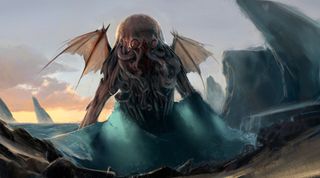
The Melbourne-based concept artist and illustrator Darren Yeow failed at being freelance twice. Moving back into studio roles, it's only over the past five years that he's successfully crafted a path for himself – and he wouldn't have it any other way.
However, he's careful to reiterate the significance in deciding upon this particular path for yourself. "Freelancing is a serious undertaking that requires the wearing of numerous hats to pull off successfully," he explains.
The Freelance Route
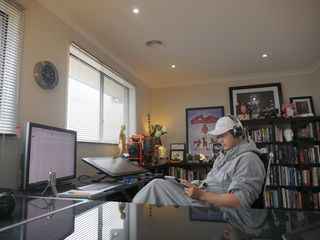
Pros
The ability to choose your own clients and enjoy the finer things in life. "What I love most about my choice as a freelancer," says Darren, "is being able to see my two-year-old son growing up every day."
"You get to work on a lot of different projects, instead of just working for one for years in a studio," reveals Jana Schirmer, a freelance artist and illustrator based in Berlin. "I love doing concept art and I love illustration, and I'm able to do both as a freelancer."
Cons
"As a freelancer, you're running a small business, which requires many non-art related skills that studio artists don't need to contend with," says Darren.
Get the Creative Bloq Newsletter
Daily design news, reviews, how-tos and more, as picked by the editors.
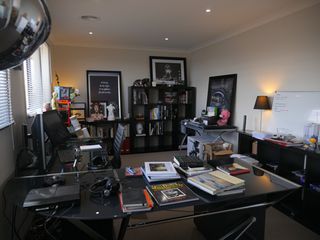
These skills include: Client billing and chasing payment, keeping the books up-to-date, dealing with taxes, health cover, putting funds away for retirement, insurance, paying overheads and investing in skills training
…All on top of actually getting client work done!
Clients can be a challenge, as Jana explains, it all comes down to the correct contracts. "Don't start working before you see a contract,"she continues. "Once I started working for a small client when I had just started freelancing. After finishing the work, I never heard back from him. It wasn't very smart on my end."
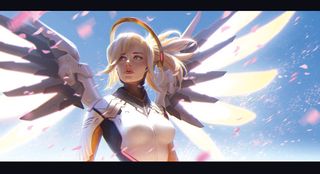
But as Darren says, you can take certain steps to ensure potential clients don't turn into a total horror show. "Nightmare clients tend to be new clients, so I begin dealing with them before they turn out to be nightmare clients," he says.
"First, the client understands that I intend to enter into a mutually beneficial relationship – not a dictatorship. I'm there to bring flesh to their vision, with their guidance. But I'm not a doormat, and in order to bring about the best outcome, we need to respect each other's skill sets and worth.
"If you communicate this part in the right way, this won't offend good clients. In fact, most will appreciate this as a mark of one professional to another – but it will bring out red flags in egotistical prima-donna types."
Taking the Studio Route
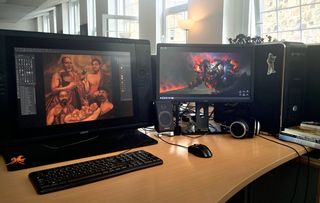
Pros
Working in a studio does allow you to flourish in creative collaboration; gaining constructive criticism and building friendships to ensure you produce the best work possible. "Freelance life is great in many ways – oh, how I miss 11am starts! – but there's nothing like working with a group of friends to inspire you and make every day exciting," says Blazing Griffin lead artist Paul Scott Canavan.
Weta concept artist Christian Pearce couldn't agree more. "I love the people and all the interesting stuff that happens here," he says.

"Weta is different to most design studios in that there's a full workshop here – engineering, model-making, 3D, moulding and casting, sculpting, paint shop – every time you get out of your chair you bump into people doing something you don't know how to do and they're really freaking good at it."
Cons
However, working within a studio doesn't necessarily mean you can escape difficult clients." If it's clearly going nowhere I'll just step away," says Paul. "Don't make a fuss. Sometimes these people are just going through some trouble and I always try not to burn bridges."
Having art-directed Distant Star: Revenant Fleet, The Thirty-Nine Steps, Dino Tribes and APB: Retribution, Paul has worked on a range of huge projects and puts a safeguard in place. "I always ask for 50 per cent of the commission up front and only deliver the final product on receipt of the second 50 per cent."
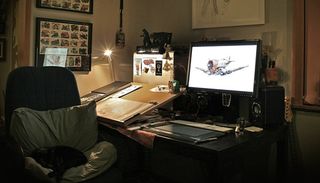
Whether you want to get into the industry through internships and applications, or prefer to go it alone, there's an overlapping aspect to both endeavours, as Paul concludes. "I turned down a couple of fairly large jobs because I didn't feel ready and was afraid of meeting new people," he says. "But the longer you spend in this industry, the more you'll learn that everyone is just like you really. Take the plunge – it's always worth doing!"
For the full article, including a Q&A on the matter with artist, Thomas Frick, make sure you pick up ImagineFX issue 126.
Get your copy of ImagineFX 126 today!
Words: Sammy Maine
Like this? Read these!

Thank you for reading 5 articles this month* Join now for unlimited access
Enjoy your first month for just £1 / $1 / €1
*Read 5 free articles per month without a subscription

Join now for unlimited access
Try first month for just £1 / $1 / €1
The Creative Bloq team is made up of a group of design fans, and has changed and evolved since Creative Bloq began back in 2012. The current website team consists of eight full-time members of staff: Editor Georgia Coggan, Deputy Editor Rosie Hilder, Ecommerce Editor Beren Neale, Senior News Editor Daniel Piper, Editor, Digital Art and 3D Ian Dean, Tech Reviews Editor Erlingur Einarsson, Ecommerce Writer Beth Nicholls and Staff Writer Natalie Fear, as well as a roster of freelancers from around the world. The ImagineFX magazine team also pitch in, ensuring that content from leading digital art publication ImagineFX is represented on Creative Bloq.
